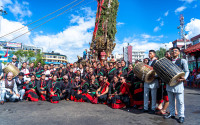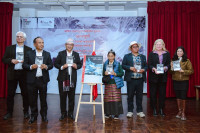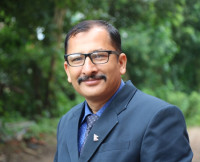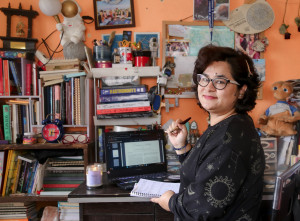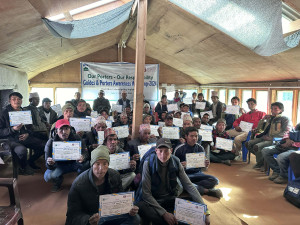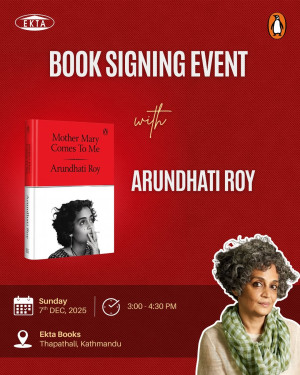Culture & Lifestyle
Twelve years, one sacred dance
Carried forward by generations of the Putuwar community, the Akash Bhairav dance blends fear, devotion, and discipline.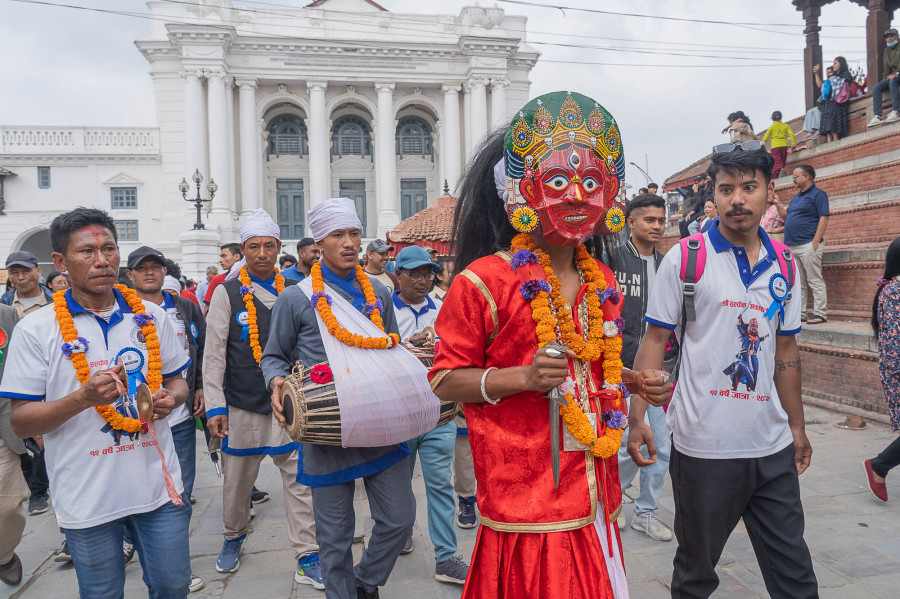
Prasant Mali
Sanju Putuwar, 28, from Halchok, Kathmandu, has a deep love for culture. Since childhood, he has been drawn to festivals and processions, often accompanying his grandfather, Indra Bahadur, a guru of traditional drums, during performances and lending a hand in religious rituals.
This eagerness has kept him actively involved in the Akash Bhairav dance for six years. He carried the ceremonial lamp in the recently concluded 12-year Akash Bhairav festival.
Om Putuwar, 19, from Halchok, was fascinated by the idea of performing as Bhairav from a young age. Bhairav is considered the fierce form of Lord Mahadev. “I often wondered how it would feel to dance in that form,” he recalls. “At first, I was very scared. I still remember trembling with fear while lighting incense after putting on the mask.”
“Although the training teaches everything, wearing the crown always brings a different experience,” he says. “One must be disciplined to perform the dance. You cannot eat impure food during the ritual. Dedication is a must.”
Another participant, Dinesh Putuwar, says he joined the dance to help preserve cultural traditions. He has been active in the Halchok Akash Bhairav dance for six years and is now the master drummer. “If our ancestors had not preserved it, our generation would have remained unaware of the dance,” he says. “We are also working to pass this knowledge on to the next generation.”
The Putuwar community took the lead in organising this year’s 12-year Halchok Akash Bhairav festival. The Halchok Akash Bhairav dance is also performed annually during Indra Jatra, though only the dances of Akash Bhairav, Chandi, and Kumari are staged on that occasion. Preparations by the Guthiyars for Indra Jatra are already underway.
However, during the festival, a wider range of dances are performed, including those of Chandi, Kumari, Halchok Akash Bhairav, Ganga, Mahadev, Parvati, Akash Devi, Barahi, Mahakali, and Dakshinakali.
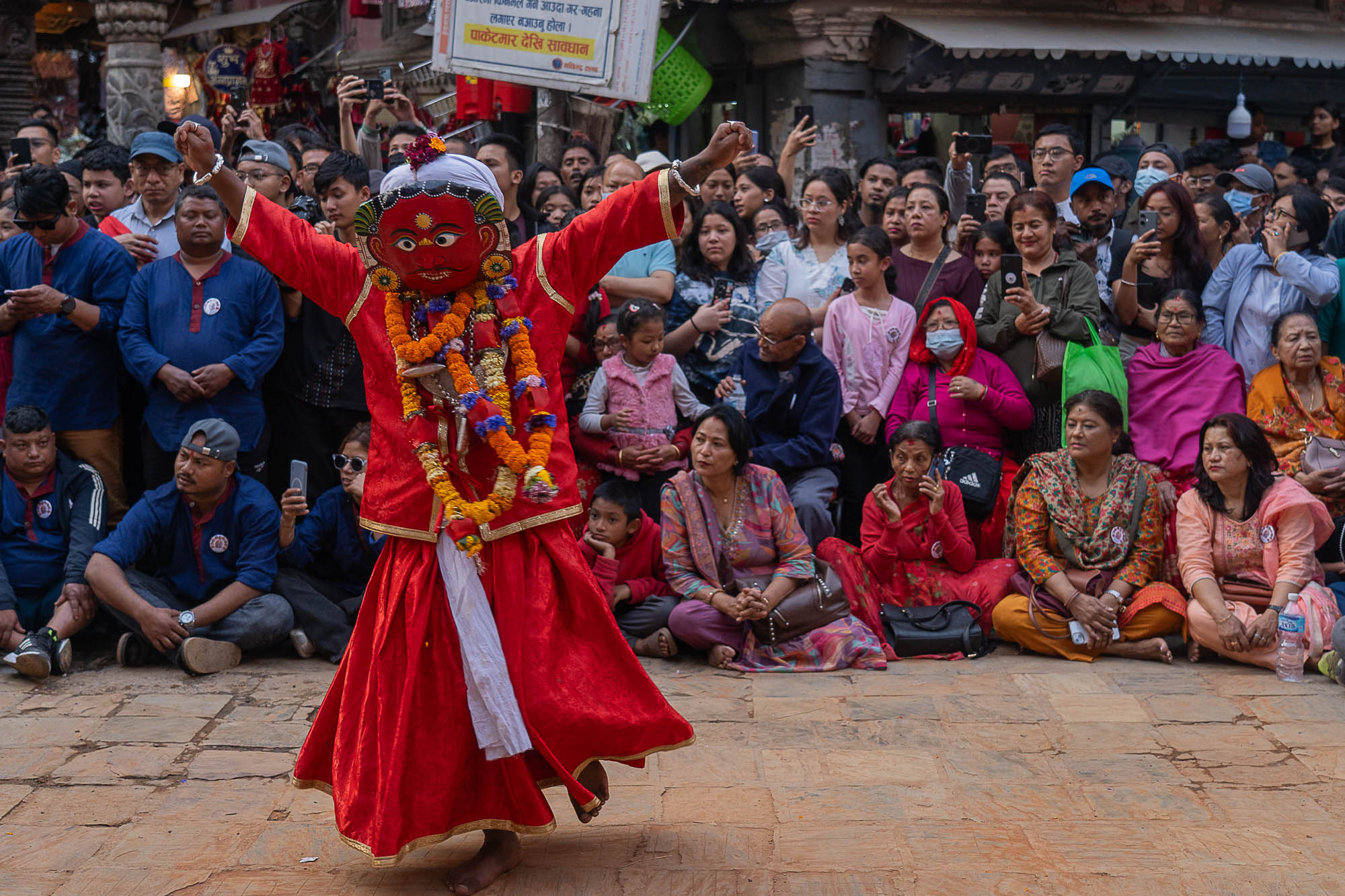
During the festival, it is believed that misfortune befalls anyone who meets Akash Devi’s gaze. For this reason, while the deities are taken on a city procession or perform dances on the Dabali stage, people are strictly prohibited from watching the dance from rooftops, windows, or balconies. This restriction is publicly announced through loudspeakers.
But why such a prohibition? Cultural expert Chunda Bajracharya explains, “Akash Devi does not dance facing the ground but towards the sky. Since she is invoked through Tantric rituals, if an ordinary person were to meet her gaze, they would be unable to withstand her power.”
According to Nar Bahadur Putuwar, the Halchok Akash Bhairav dance guru, an unusual incident occurred during the 12-year festival of 1953. “Suddenly, a sparrow fell from the sky. After a short while, another one dropped. The crowd was in chaos,” he recalls. “At that very moment, Akash Devi’s dance was being performed. Everyone grew frightened, saying misfortune had struck after someone met the goddess’s gaze.”
He also witnessed a similar incident during the festival of 1965, when another sparrow fell mid-flight. “People thought the bird might come back to life after some time, but it never did,” he recounts.
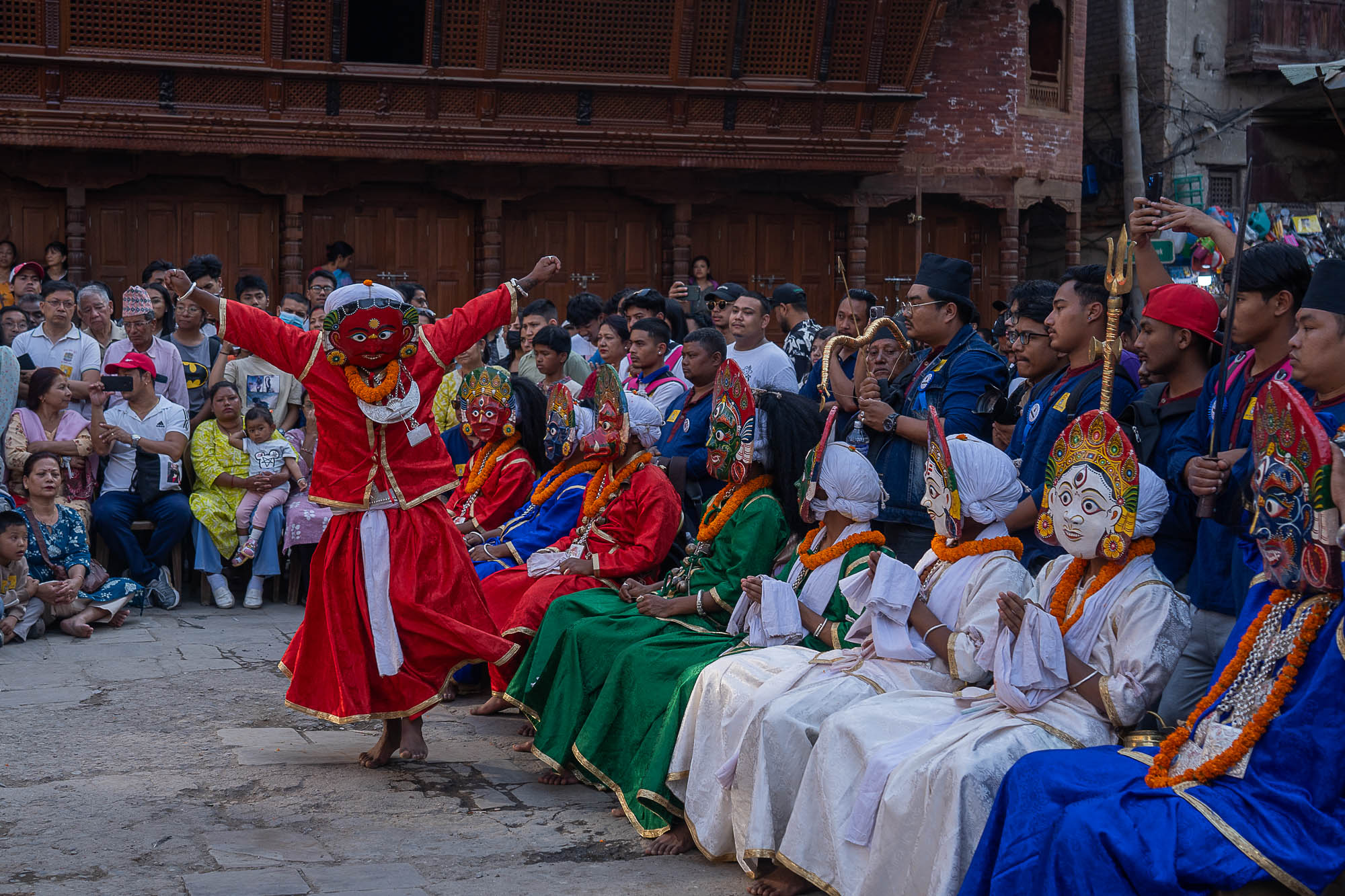
Akash Devi is especially worshipped as the deity who dispels HawaDa:agu, a condition believed to be caused by air imbalance. In Nepal Bhasa, this term refers to sudden stiffness or pain in the hands, legs, neck, back, or shoulders that makes movement difficult.
There is a tradition of worshipping Akash Devi to ward off such ailments, with some even making vows in her name. Devotees come not only from the Kathmandu Valley but also from other districts to perform these vow-rituals.
In the Nepal Mandala region (Kathmandu valley), 12-year festivals are celebrated for various traditional dances, including Bhadra Kali Khadgasiddhi, Pachali Bhairav, Nardevi, Dee Pyankh (Devi dance), Bagh Bhairav of Kirtipur, Navadurga of Bhaktapur, Neelbarahi of Bode, Navadurga of Thecho in Lalitpur, Harisiddhi Bhawani Devi, and Rudrayani of Khokana. Each of these 12-year festivals has its own unique customs and traditions.
For example, during the 12-year festival in Thecho, weddings, feasts, and certain religious vows are prohibited in the settlement. In Khokana, for a specified period, activities such as washing clothes, using leather items, consuming chicken or eggs, applying red tika during worship, and engaging in entertainment are completely forbidden.
The 12-year festival has some unique rules—only members of the Putuwar community are allowed to perform the dance, and married men are prohibited from taking on the role of the deities.
According to dance guru Aitman Putuwar, the deity is believed to descend more easily on the bodies of unmarried men. He also explained that when the festival featured the dances of the Singhini and Byaghini deities, the accompanying songs had long been lost, which prevented these dances from being appropriately performed for many years.
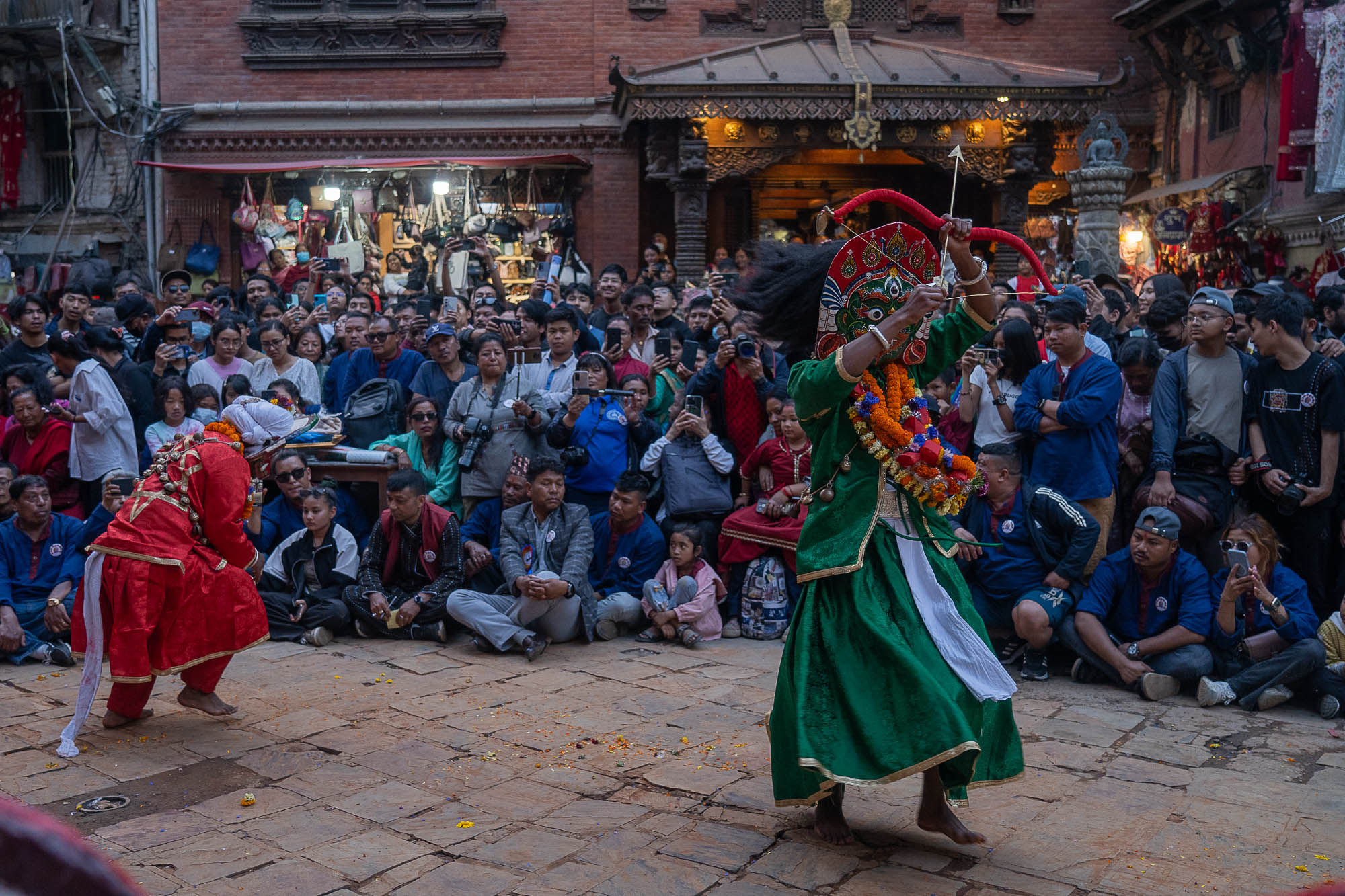
The Putuwar community performs the dance and is also linked to King Prithvi Narayan Shah. According to a popular belief, during a battle, when soldiers from Kirtipur were about to kill the Gorkha king, a Khadgi stopped them, saying it would be against dharma to kill the king. The Putuwars then carried him in a palanquin to Indra Dah in Thankot.
In that same battle, the Kirtipur army had blinded both the Gorkha commander Kalu Pandey and Prithvi Narayan Shah’s brother, Surpratap. Because the Putuwar community saved the king from such a brutal battle and brought him safely to Thankot, it is said that the expenses for the dance, organised by the Putuwars, were once covered by the royal palace.
The festival in Halchok began on Baisakh 1 with the formal worship performed by the head of state in the presence of the Guruju Paltan. It is believed that the Akash Bhairav festival was first established 1,038 years ago by King Gunakam Dev.




 7.12°C Kathmandu
7.12°C Kathmandu
